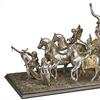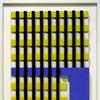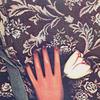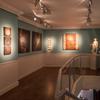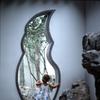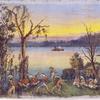Ai Weiwei's City-Wide 'Good Fences Make Good Neighbors' Installation Spreads a Message
- NEW YORK, New York
- /
- October 11, 2017
“Something there is that doesn’t love a wall,” wrote Robert Frost in his beloved 1914 poem The Mending Wall. The poet's conversation with a neighbor over a fence between their properties leads the neighbor to quip, ‘Good fences make good neighbors.'
Frost ponders, "I wonder If I could put a notion in his head: 'Why do they make good neighbors?'"
World renowned artist and human rights activist Ai Weiwei explores the theme in Good Fences Make Good Neighbors, his largest and most ambitious public art exhibition to date, on view October 12, 2017 – February 11, 2018, at 300+ sites across New York City.
As the culmination of its 40th Anniversary year, New York City's Public Art Fund curated the citywide exhibition. Inspired by the international migration crisis and current global geopolitical landscape, the exhibition transforms the security fence into a powerful social and artistic symbol with interventions across the city.
"It's about territory. It's about borders. It's about immigration," Ai told Reason about his symbolic fence installations in the city's five boroughs.
Large-scale, site-specific works are installed at Doris C. Freedman Plaza at Central Park, the Washington Square Arch in Greenwich Village, and the Unisphere at Flushing Meadows Corona Park in Queens, in partnership with NYC Parks. These are joined by site-specific interventions on top of and in between private buildings located at 48 East 7th Street, 189 Chrystie Street, 248 Bowery, and The Cooper Union at Astor Place; a series of new flagpole-mounted works.
In addition to these site-specific works, Ai has created a new series of 200 unique two-dimensional banners that will appear in all five boroughs on lampposts, along with 98 documentary images from his research at refugee camps and national borders on JCDecaux bus shelters and graphic works on newsstands.
Each of the works grows out of the existing urban infrastructure, using the fabric of the city as its base and drawing attention to the role of the fence in dividing people. In doing so, the artist highlights how this form, ubiquitous yet also potent, can alter how we perceive and relate to our environment.
Ai has particular empathy with displaced people. Growing up amid the upheavals of the Cultural Revolution, Ai and his family were exiled to Shihezi, Xinjiang Province where his father, a renowned poet who had been branded an enemy of the state, was made to clean the village’s communal toilets. Later he moved to New York City as an art student in the 1980s and experienced life as an immigrant in the U.S., where he pursued an interest in Western modern and contemporary art. Returning to China in 1993, Ai gained artistic success but also notoriety for his presence on social media and for using his art and public platform to engage with pressing political issues, eventually resulting in his 2011 arrest and detention by the Chinese government. Since the re-instatement of his passport in 2015, Ai has traveled to refugee camps across the globe and has dedicated much of his practice to bringing attention to the plight of displaced people, many of whom are victims of war or acts of terror. This global issue has gained a different relevance in the U.S. in the wake of new policies on immigration and border control, making the fence a particularly charged symbol of division and isolationism in this country.
Public Art Fund Director & Chief Curator Nicholas Baume said, “In many ways, Good Fences Make Good Neighbors is the culmination of his work to date. It grows out of his personal experience of ‘otherness,’ his distinguished practice as both artist and architect, as well as his intensive research on the international refugee crisis and global rise of nationalism. At the same time, his long and formative history with New York has been deeply influential in the development of this exhibition.”
With both local and global resonances, Good Fences Make Good Neighbors utilizes diverse sites across the city – in locations both iconic and community-oriented – that connect Ai’s personal story as an artist, activist, and immigrant, to the broader history of immigration in New York. These locations also highlight the city as a site for artistic intervention, and the charged socio-political moment reverberating around the world.
This exhibition is curated by Public Art Fund Director & Chief Curator Nicholas Baume with the assistance of Associate Curator Daniel S. Palmer.



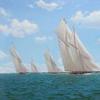
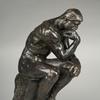

100x100_c.jpg)
